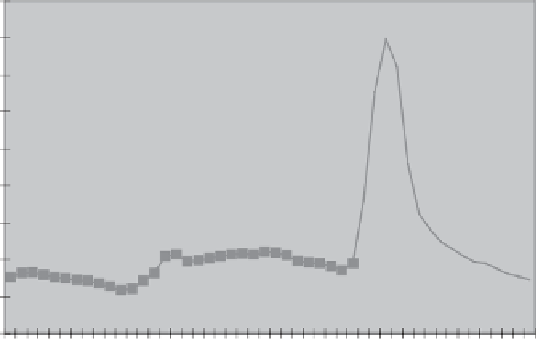Environmental Engineering Reference
In-Depth Information
The Operation of the Pool and Pool Rules
Instead of generation plant being scheduled centrally in an optimum economic dispatch
mode refl ecting effi ciency, operating cost and fl exibility, generators now 'bid' into a pool,
offering to generate a given output at a given price for the day ahead. The NGC would
examine the bids, put them in order of increasing cost and then from this list select the
generation plants it would need to meet the demand in a given half-hour period, allowing
for transmission constraints and reserve. The most expensive plant required in each half-
hour period would set the so-called system marginal price (SMP) for that half-hour. To
this price would be added a capacity credit in order to ensure that suffi cient capacity over
and above maximum demand would always be available for reasons of security of supply.
This price was called the pool purchase price (PPP) and was paid to
all
generators selected
within the half-hour regardless of whether they had bid less. This pool system is known
as a
uniform auction
.
Infl exible plant such as nuclear would commonly bid in at a very low price or even
zero to ensure being selected. Note that they would still be paid the PPP even if they had
bid zero. Combined cycle gas turbines (CCGTs) with fi xed gas contracts would also bid
low to ensure being scheduled. The next lowest prices would be operated by the coal fi red
generators, which were more fl exible but with higher operating costs. Finally, open cycle
gas turbines and pump storage would bid higher due to higher operating costs and greater
fl exibility. It can be seen that in general the order of the bids would be in line with the
old merit order system but now prices were meant to be driven down due to the competi-
tive bidding nature of the pool.
Figure 7.13 shows a comparison of the average daily half-hourly demand and the PPP for
November 1999. It can be seen that the trend in prices throughout the day broadly follows
the demand trend during the day. The peaks in prices refl ect the more expensive plants that
90
50000
45000
80
40000
70
35000
60
30000
50
25000
€
PPP (
/MWh)
Demand (MW)
40
20000
30
15000
20
10000
10
5000
0
0
00:30 02:30 04:30 06:30 08:30 10:30
12:30
14:30 16:30 18:30 20:30
22:30
Figure 7.13
NGC average daily half -hourly demand and pool purchase price for November 1999








